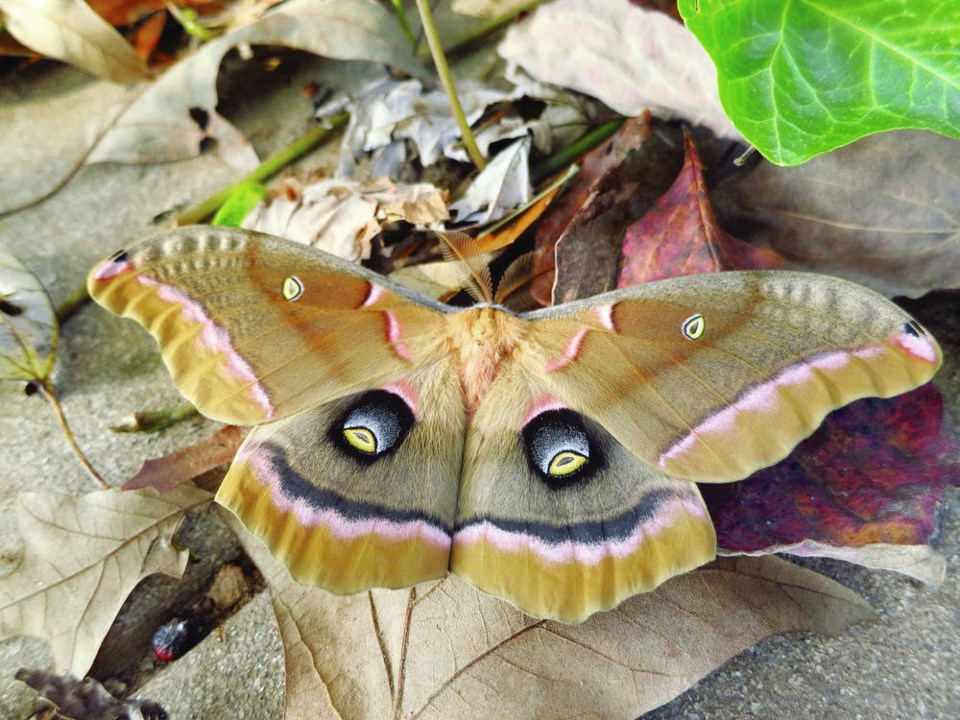Some shark species can smell the blood of prey up to almost half a kilometre away and in tiny quantities — one part of blood to one million parts of water, equal to one teaspoon of blood in a swimming pool.
Instead of perceiving the world as colour and light or pitch and volume, scent-sensitive animals like sharks “see” the world largely in scent. Olfaction — what pointy-headed folk call the sense of smell — is a key sense for such species.
For olfactorily gifted critters that don’t live in water, land and air may nonetheless resemble a sea of smells. To a beetle or moth, for example, the world may seem like a complex, ever-shifting scentscape of pools, layers, rivers, currents and eddies of volatile chemicals that the insects detect and read to navigate their way through life.
Buzzing a bit to the left, the insect encounters a breeze-borne stream of scent-signals sent out by a snowdrop or similar blossom to entice pollinators to come feast on protein-laden pollen and honey-sweet nectar.
Fluttering a few feet farther, the insect dips into a cloud of chemicals signalling “No vacancy here” released by other insects who have found (using their scent-sory skills) a great place to raise a family of hundreds or thousands and don’t want others to crowd them out.
Flying on, our winged friend plunges into a flume of come-hither pheromones — bug personals such as “This way to amatory Antheraea for off-the-wing-scale fun,” “Sexy Scarabée seeks guys with awesome mandibles and cute cuticles ” or “Hey, girlfriends! Spruce beetle spa party here — bottomless monoterpene cocktails included!”
It’s not that these critters don’t see or hear, but sight and sound don’t dominate the animals’ sensory toolbox as they do ours.
And the animals may be exceptional at detecting and decoding scent. The shark’s blood-detection abilities are incredible, but the Polyphemus moth can sense scent molecules in concentrations of parts per billion. Males of this large, showy North American species of the giant silk moth family have long, plumy antennae, a moth’s version of a nose.
To trigger a reaction within the moth’s body, the antennae need capture fewer than six single molecules of a relevant pheromone or plant chemical. Male Polyphemus antennae are so attuned to the female moth’s pheromones, for example, that a male can zero in on a female from up to 4.5 kilometres away (see the personal ad above about Antheraea).
Male silk moths don’t need to download stalker apps onto their girlfriends’ phones. Their stalker ware is wired into their brains.
Naturally, when it comes to abilities like that, we humans want to turn it to our own ends.
Nature Boy says he’d use super-olfaction to pick out calypso orchids growing on the forest floor kilometres away. Other geeky people seek to harness it for tasks like detecting buried landmines, tracking chemical leaks in factories, and finding people buried in collapsed buildings.
Last year, researchers at the University of Washington, just across the way, provided the latest example of these efforts. They removed the antennae from a live hawkmoth and attached them to a tiny drone using tiny wires that could translate the signal strength of odours detected by the antennae.
The drone, or Smellicopter (as it were), was programmed to move about as a moth does, scanning and casting about for a scent, then reacting by moving towards it. The antennae, being amputated, remained biologically and chemically active for four hours.
By keeping antennae attached to a whole, live moth, French scientists harnessed the super-scentsibilities of antennae that kept going and going throughout the day. The researchers yoked a living male silk moth — he with the built-in stalker ware — into a small, wheeled microrobot, then inserted tiny electrodes into the moth’s neck and connected them to the robot motor. The moth then “drove” the robot, casting about for scent and steering it towards desirable odours. (Watch the experiment at www.jove.com/v/51704/using-insect-electroantennogram-sensors-on-autonomous-robots-for.)
He wasn’t Michael Schumother driving Formula One by any means. And I’m not sure how he felt about being strapped into the driver’s seat, but Monsieur Moth behaved exactly as its scent-wired nervous system is programmed to behave — find the captivating odour, move towards its source.
Imagine, around us are Shakespeares of scent, Picassos of perfume, Offenbachs of odour … and we are noseblind philistines. No wonder smell-o-vison failed.
keiran_moique@rocketmail.com



